After more than two decades, the International African American Museum (IAAM)—designed by Pei Cobb Freed & Partners with executive architect Moody Nolan—will open to the public on June 27 at Gadsden’s Wharf in Charleston, South Carolina. Nearly half of all enslaved Africans who were brought to North America in the 18th and 19th centuries arrived at this former port, and the IAAM was conceived to tell the stories of these people and their descendants.
As the project’s lead designer, the late Henry N. Cobb, wrote in his Words & Works 1948-2018: Scenes from a Life in Architecture: “As the place at which many thousands of Africans from diverse cultures first set foot in North America, Gadsden’s Wharf is not just the right place to tell this story; it is hallowed ground. Hence the special design challenge of the International African American Museum: to build on this site without occupying it.” The IAAM became the last project Cobb actively worked on before his death in 2020.
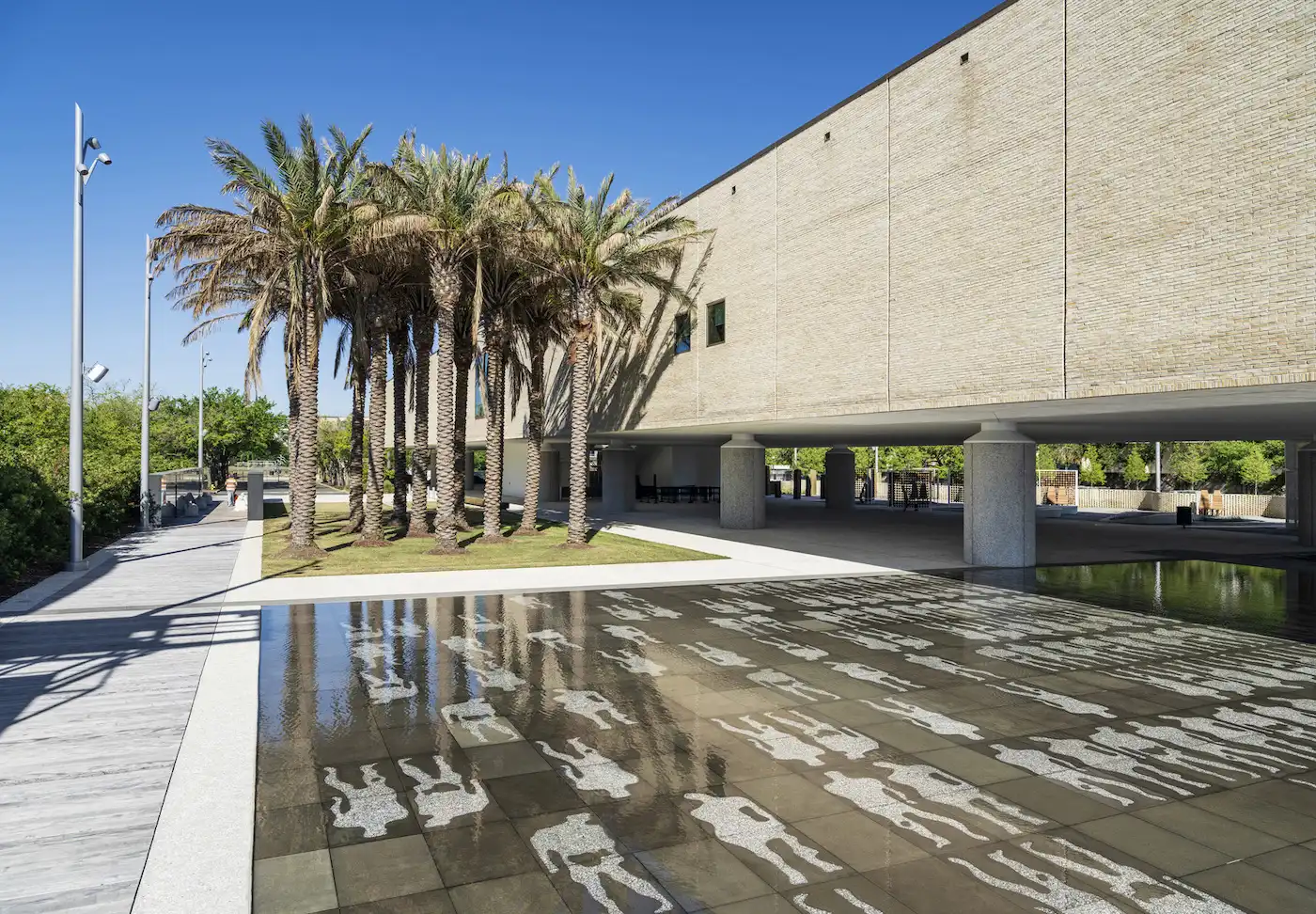
The ebb and flow of water at the Tide Tribute reveals and conceals figures that represent enslaved Africans lying close together on the lower decks of a slave ship. Photo © Sahar Coston-Hardy/Esto
To this end, the austere, 41,800-square-foot, single-story rectangular volume—which is faced with pale yellow brick—floats 13 feet above the ground atop 18 cylindrical pillars clad with traditional oyster-shell tabby. Leading from the street, Oakland, California–based Hood Design Studio’s African Ancestors Memorial Garden reinterprets the site as a series of sub-gardens that negotiate the building’s footprint and recall the South Carolina Lowcountry landscape and “wide-reaching heritage of the African diaspora,” according to a statement. Landscape architect Walter Hood describes this intervention as “an authentic place of arrival, a place for becoming,” expressed in a palette of water, tabby, grasses, wood, and stone. The spaces “offer contemplation, celebration, and fraught memories,” he explains.
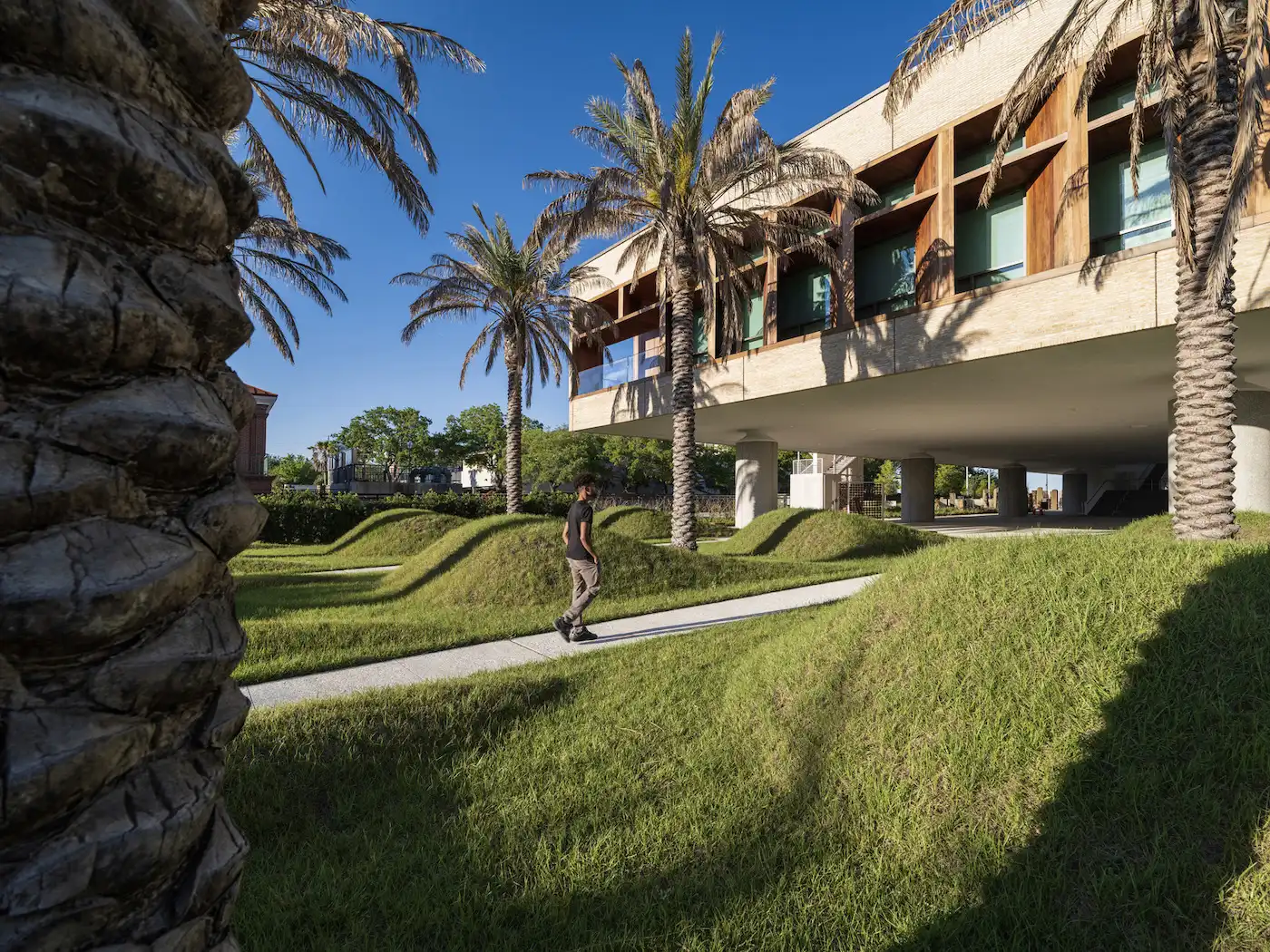
The rolling landscape of the African Ancestors Memorial Garden. Photo © Sahar Coston-Hardy/Esto
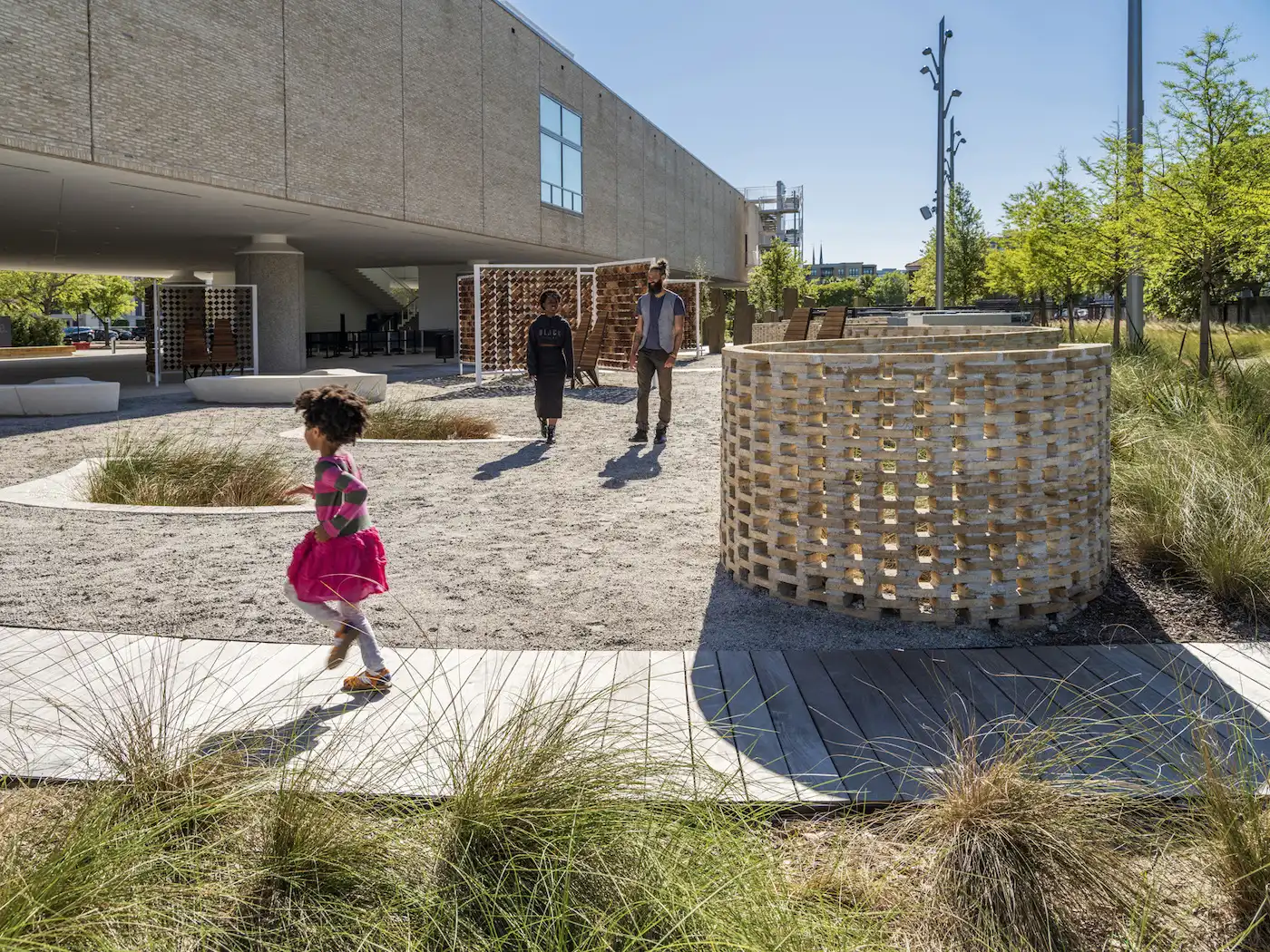
Designed by Walter Hood Studio, the garden draws inspiration from the “tapestry of the low-country landscape and the wide-reaching heritage of the African diaspora.” Photo © Sahar Coston-Hardy/Esto
The garden incorporates installations and site objects that mark the Wharf’s history and archeology. Beneath the museum, a reflecting pool facing Charleston Harbor features bas-relief motifs inspired by the widely reproduced 18th-century diagram of the Brookes slave ship, which illustrated how enslaved Africans, chained together in rows, were trafficked in its lower decks. An adjacent stainless-steel band—described as a “ledger of memory engraved with the names of ports that marked the beginning and end of countless journeys during the transatlantic slave trade”—marks the Wharf’s edge during the slave trade’s peak at the beginning of the 19th Century. A granite-paved area anticipates group activities and performances.
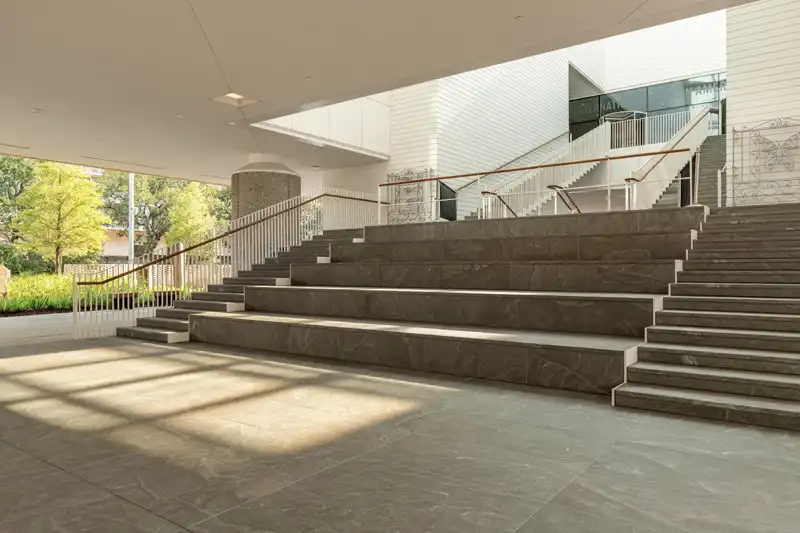
Visitors ascend a monumental stair, drawn into the museum through an central atrium. Photo © Mike Habat
A monumental stair connects the landscape to the floating building above through a skylit atrium, allowing visitors to pass “from shadow to light.” Large windows at both ends, which are framed by African sapele-wood louvers, provide views of the Atlantic and downtown Charleston. Across the museum’s nine galleries, exhibition design firm Ralph Appelbaum Associates (RAA) produced installations that foreground “South Carolina and Gullah Geechee culture, African roots, and the Atlantic world,” as well as “the legacies of slavery and current movements around racial equality and social justice.” The IAAM also houses the Center for Family History, which opens the museum’s collection of more than 650 artifacts, works of art, photographs, books, and documents to the public to aid in African-American genealogical research.
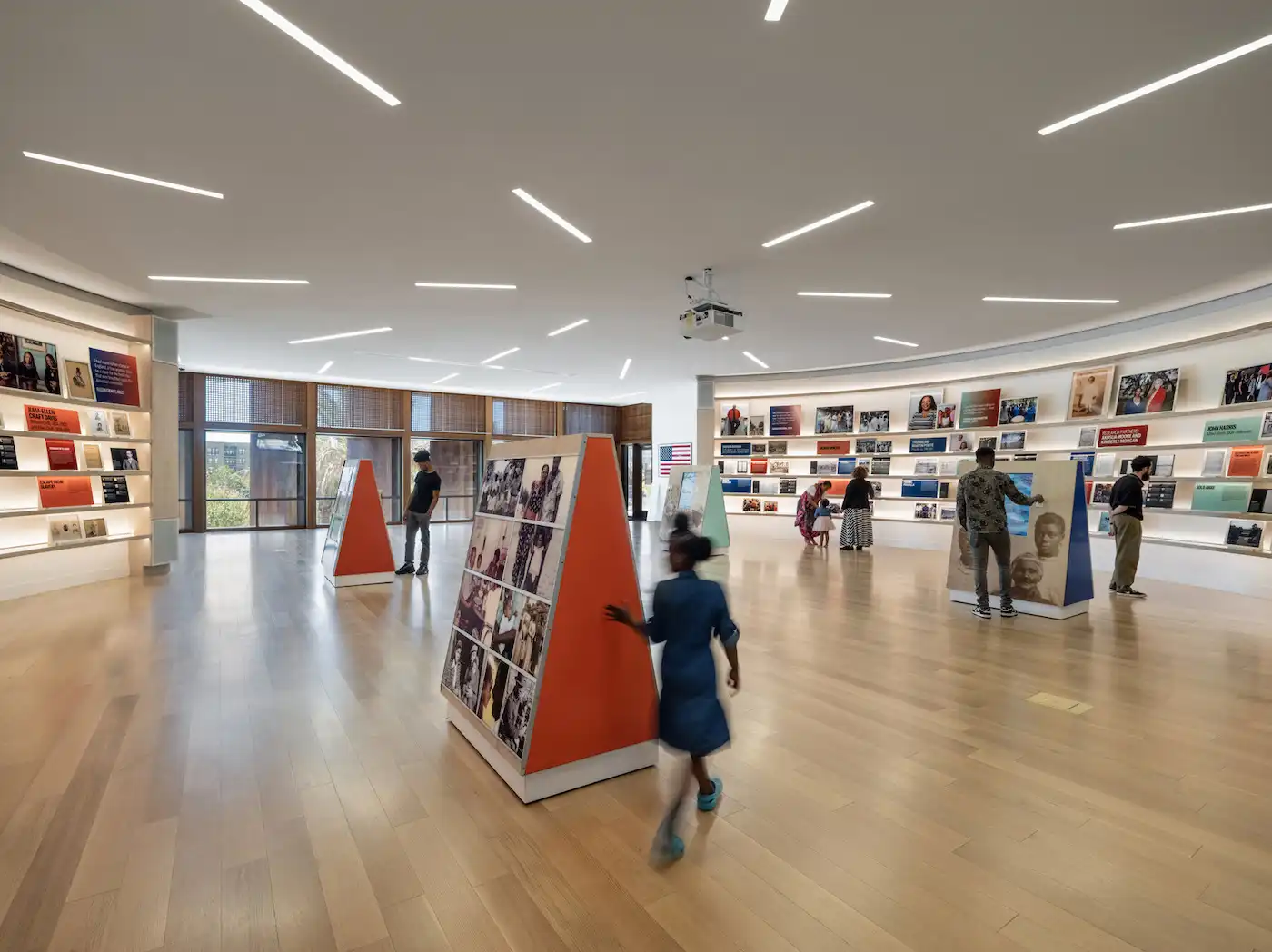
Center for Family History at the west end of IAAM. Photo © Sahar Coston-Hardy/Esto
The opening marks the culmination of an effort that dates back to 2000, when Charleston’s then-mayor Joseph P. Riley, Jr., proposed establishing an African-American history museum in the city during his inaugural address. Following a decade of negotiations over administrative and design decisions (including the museum’s eventual site), the IAAM launched a capital campaign in 2011 to raise $75 million. The museum broke ground in 2019 and construction was delayed further by the COVID-19 pandemic—inflating total costs to approximately $120 million. The museum’s original scheduled opening, in January of this year, was also postponed due to climate control concerns.
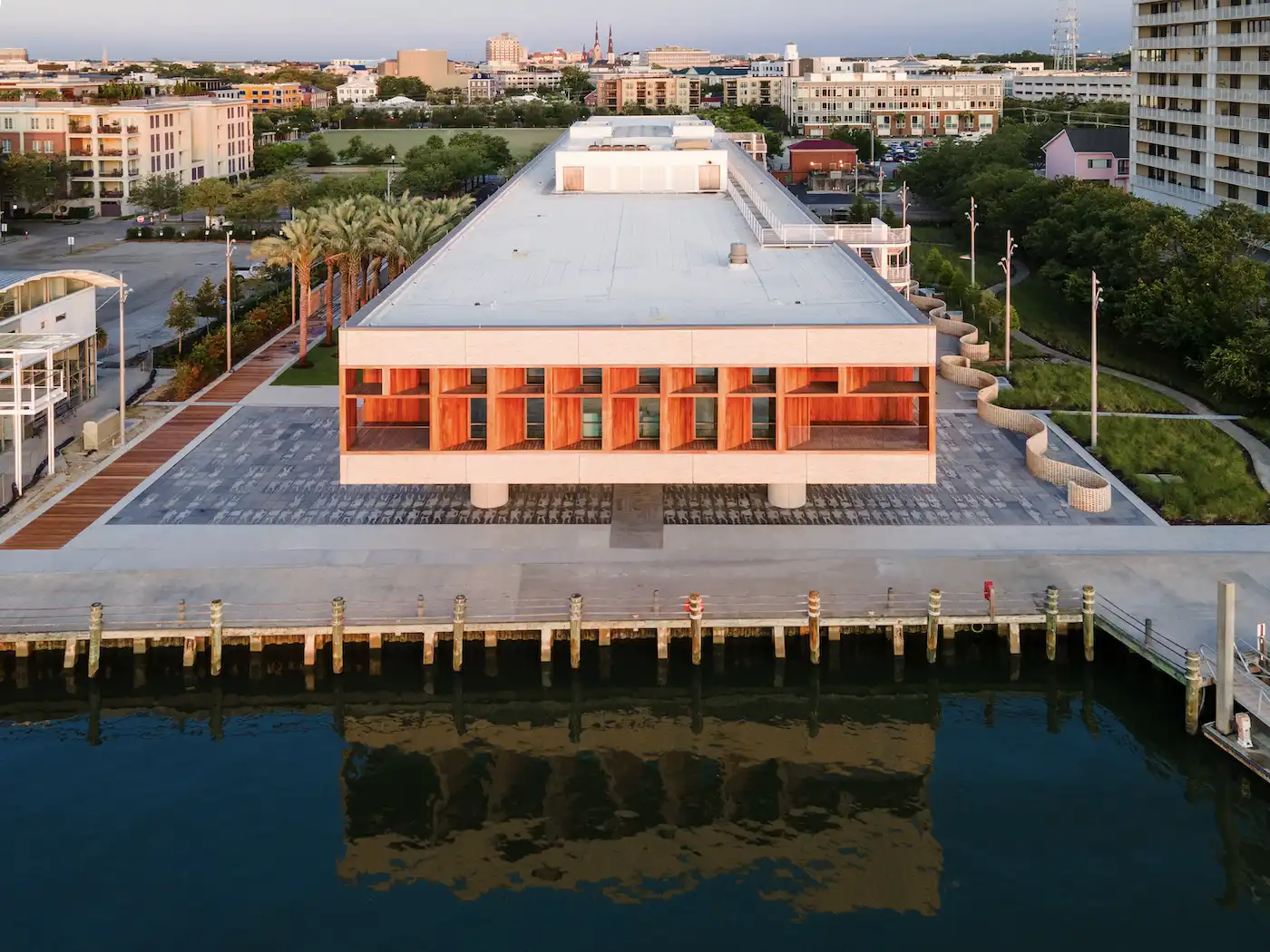
View of the single-story museum floating above Gadsden's Wharf, Charleston. Photo © Sahar Coston-Hardy/Esto
“Museums have become community resources,” RAA vice president and chief creative officer Aki Carpenter noted regarding the role that the institution aims to play in the larger community. “IAAM is a space to address important issues we are talking about in our country, in the place where these things happened.”

.webp?t=1687536476&width=1080)
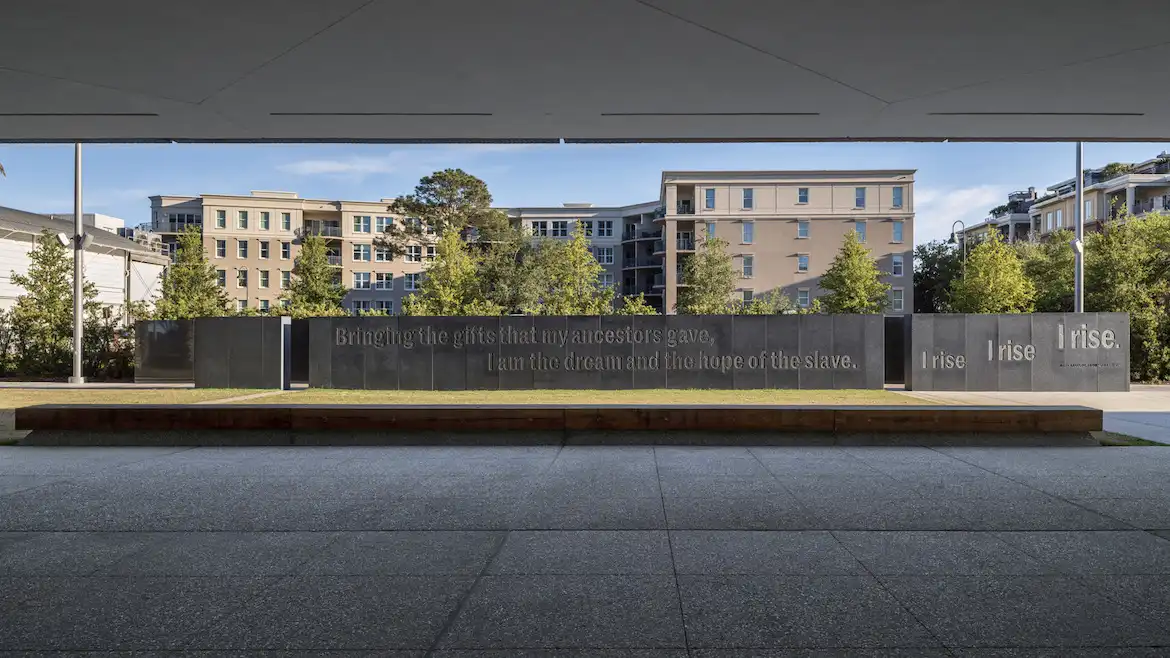
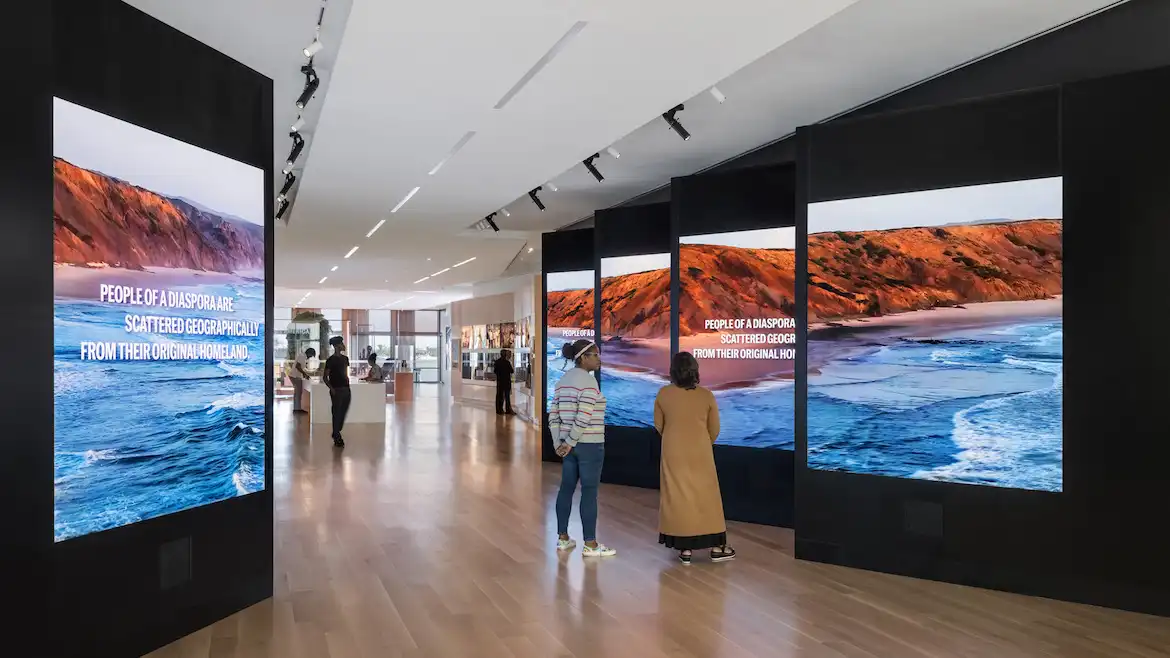


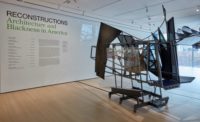
Post a comment to this article
Report Abusive Comment